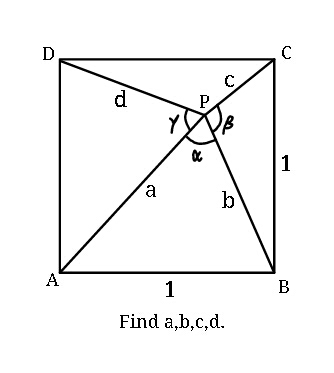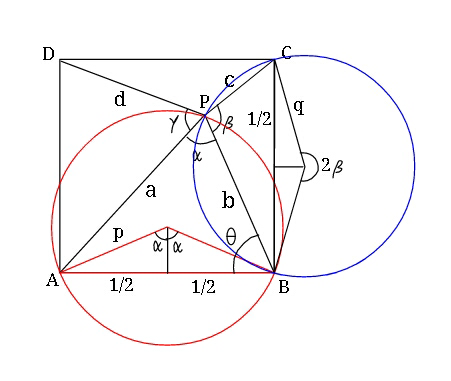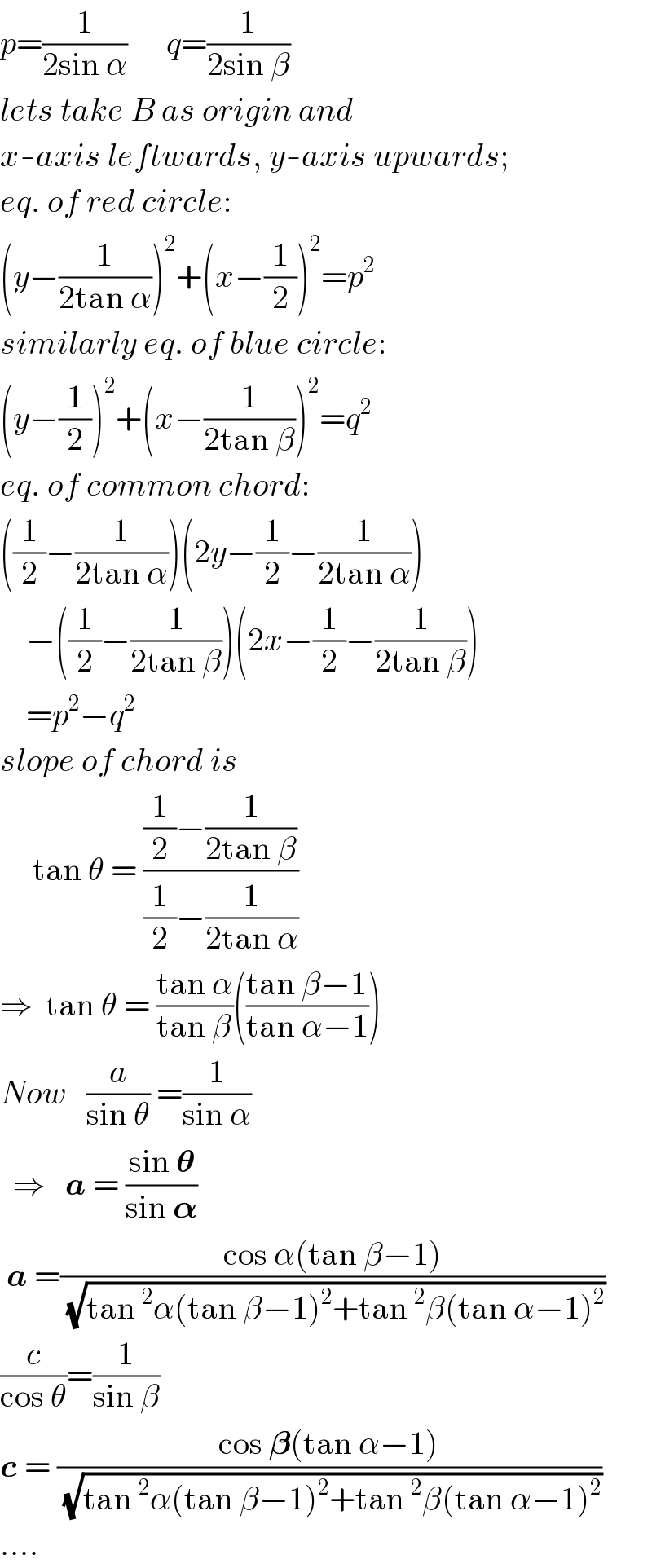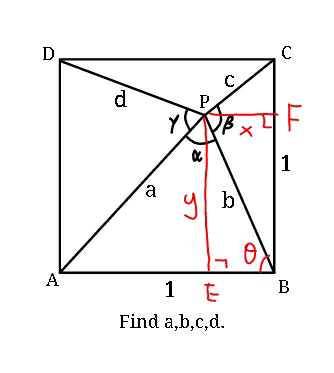
Question and Answers Forum
Question Number 40170 by ajfour last updated on 16/Jul/18

Commented by ajfour last updated on 16/Jul/18

Commented by ajfour last updated on 16/Jul/18

Commented by MrW3 last updated on 16/Jul/18

Answered by MrW3 last updated on 16/Jul/18

Commented by MrW3 last updated on 17/Jul/18
![(1/(sin α))=(b/(sin (α+θ))) ⇒b=((sin (α+θ))/(sin α))=cos θ+((sin θ)/(tan α)) (1/(sin β))=(b/(sin (β+(π/2)−θ))) ⇒b=((sin [(π/2)−(θ−β)])/(sin β))=((cos (θ−β))/(sin β))=((cos θ)/(tan β))+sin θ cos θ+((sin θ)/(tan α))=((cos θ)/(tan β))+sin θ tan β (1−tan α) sin θ=tan α (1−tan β) cos θ ⇒tan θ=((tan α (1−tan β))/(tan β (1−tan α)))=((1−cot β)/(1−cot α)) ⇒sin θ=((1−cot β)/(√((1−cot α)^2 +(1−cot β)^2 ))) ⇒cos θ=((1−cot α)/(√((1−cot α)^2 +(1−cot β)^2 ))) ⇒θ=tan^(−1) ((1−cot β)/(1−cot α)) (a/(sin θ))=(1/(sin α)) ⇒a=((sin θ)/(sin α)) ⇒a=((1−cot β)/(sin α (√((1−cot α)^2 +(1−cot β)^2 )))) b=cos θ+((sin θ)/(tan α)) ⇒b=((1−cot α cot β)/(√((1−cot α)^2 +(1−cot β)^2 ))) (c/(sin ((π/2)−θ)))=(1/(sin β)) ⇒c=((cos θ)/(sin β)) ⇒c=((1−cot α)/(sin β (√((1−cot α)^2 +(1−cot β)^2 )))) ⇒d=((1−cot α)/(sin γ (√((1−cot γ)^2 +(1−cot α)^2 )))) but d can also be expressed without γ: ⇒x=b cos θ ⇒y=b sin θ ⇒d=(√((1−x)^2 +(1−y)^2 )) =(√(2+x^2 +y^2 −2(x+y))) =(√(2+b^2 −2b(cos θ+sin θ))) ⇒d=(√(2+(((1−cot α cot β)[5−2(cot α+cot β)])/((1−cot α)^2 +(1−cot β)^2 )))) i.e. we only need two parameters from α,β,γ to determine a,b,c,d.](Q40177.png)
Commented by ajfour last updated on 16/Jul/18

